Contents
Petunia supercascade is a variety of ornamental plant, characterized by special splendor. It has very long stems, which are densely covered with buds during the flowering period.
What does a supercascade petunia look like?
Petunia supercascade is an annual plant belonging to the category of ampelous. It differs from most ordinary varieties in its dimensions.
The shoots of the culture are strong, thick and flexible, reach 2 m in length, hold their shape well and do not require the installation of trellises and supports. The leaves of the plant are oval, pointed at the tips, with a slight pubescence in the upper part. Annual buds are bell-shaped, they can be white, purple, blue, lilac and bicolor. During the decorative period, they appear on the stems very abundantly, one flower is formed in each sinus.
The shoots of a supercascade petunia, like those of a cascade, first grow vertically upwards, and then fall down. The culture is most often bred in flowerpots, tall pots and hanging planters, but sometimes it is also planted in open ground. The plant looks good in the composition of the alpine slides.
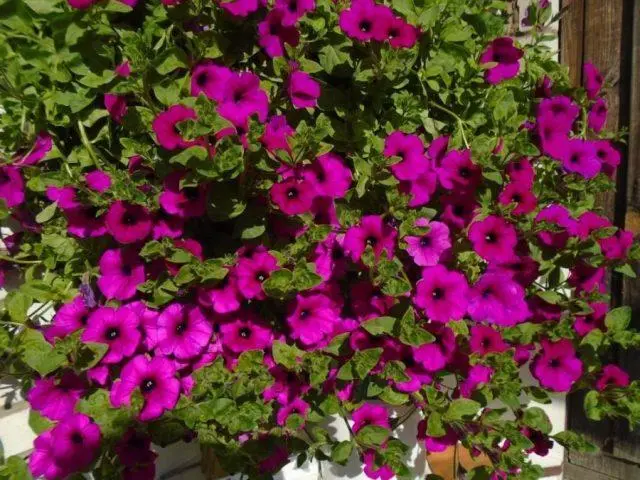
Flowering of the supercascade petunia lasts most often until mid-autumn
Advantages and disadvantages
The popularity of the annual is due to its many advantages. The benefits of the plant include:
- long flowering – the buds remain on the shoots from the beginning of summer until late autumn;
- endurance – in general, the culture withstands adverse conditions well, is not afraid of small cold snaps and rains;
- unpretentiousness – during cultivation, a supercascade petunia needs mainly watering, it does not require complex care;
- lush flowering – the plant brings a lot of large buds at the same time, they completely cover the bush;
- versatility – supercascade petunia can be bred both in containers and in flower beds.
The disadvantages of the plant are not so many. Among them are:
- exactingness to moisture – during drought, the annual begins to bloom much worse;
- large dimensions – the culture grows widely to the sides, it is necessary to provide enough free space for it;
- low frost resistance – the annual does not tolerate strong and prolonged cold.
The plant as a whole rarely suffers from diseases and pests. But when breeding a supercascade petunia in a flower bed, you need to carefully monitor the condition of its leaves. Shoots falling directly to the ground can be affected by fungi and insects, especially if the soil is waterlogged.
Description of varieties
Supercascade petunia is represented by a large number of ornamental varieties. Between themselves, they differ in shades of flowering and dimensions.
pink supercascade
A fairly compact supercascade petunia is characterized by early flowering, it blooms already at the end of May. Brings large buds up to 12 cm in diameter. The flower petals are bright pink. 8-10 buds bloom on each stem.
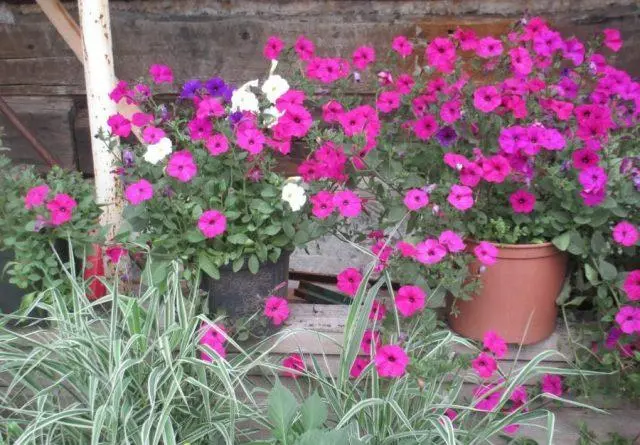
Pink supercascade reaches only 40 cm in height
Hanging mix
The variety is used mainly for breeding in hanging pots. Super Cascading Petunia produces large bell-shaped buds with pink, lilac, blue, white and red petals. The shoots of the plant first rise up, and then beautifully fall down.
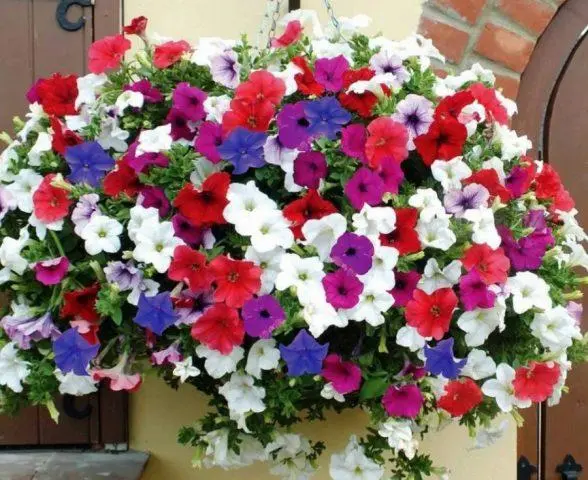
Petunia stems Hanging mix reach about 1 m in length
Petunia supercascade Burgundy
A beautiful variety reaches 30 cm in height. The annual has soft small leaves, brings red double flowers of maroon hue. The variety is often used for growing in flowerpots, used to decorate terraces and loggias.
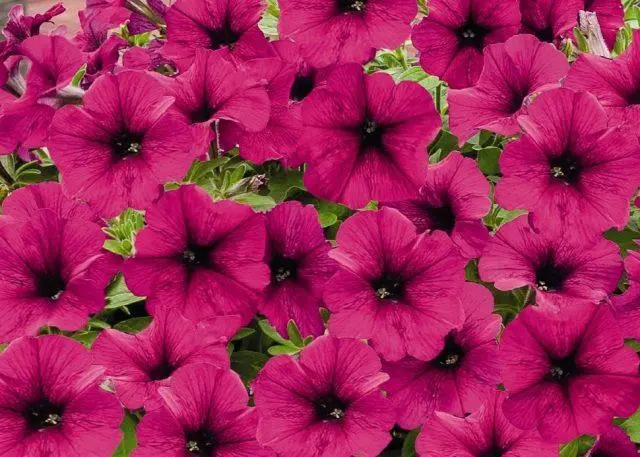
Petunia Burgundy stems stretch to an average of 70 cm
Tide series
The popular series of supercascade petunia is represented by hardy varieties with abundant flowering. Purple and light lilac varieties are in particular demand. The supercascade petunia of this series is capable of forming up to 50 buds on one stem. The length of the shoots is about 1,5 m.
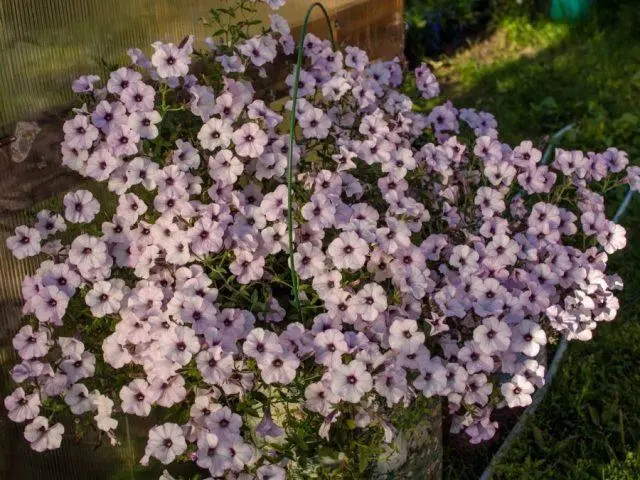
Petunia of the Tide series tolerates sudden cold snaps well
Gioconda series
The supercascade petunia Gioconda is represented by several hybrids with shoots of about 1 m in length. It is distinguished by drought resistance and good cold tolerance – the bushes can withstand a short-term drop in temperature to -8 ° C. Blooms from early summer to mid-autumn. The buds of the supercascade petunia Gioconda reach 6 cm in diameter.

Petunia Gioconda rises about 25 cm above the soil surface
Wave Series
The unpretentious supercascade petunia of this series is shade-tolerant. Withstands frosts down to -3 ° C without prejudice to flowering. The buds are large, with pink petals, becoming spherical with age. The stems reach a length of about 60 cm.
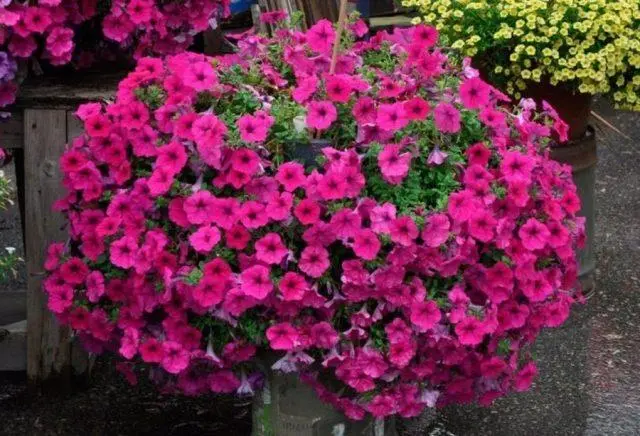
The height of supercascade petunia wave is about 15cm
Growing seedlings of supercascade petunias
It is easiest to grow a supercascade petunia for a summer cottage from seeds. It is only necessary to sow on time, and then provide the seedlings with comfortable conditions.
Terms of planting
It is recommended to sow a supercascade petunia for seedlings in the spring. Exact dates vary by region. In most areas, the procedure is performed from mid-February to early March.
In the Urals and Siberia, sowing is usually postponed in early April due to the late onset of spring. In the southern regions, landing can be carried out earlier than the standard time – in early February. In any case, you need to focus not only on the climate, but also on the weather conditions in a particular season.
Seed sowing
To successfully plant a supercascade petunia with seeds, you need to pay attention to the selection of containers and soil. A culture container is taken wide, but not too deep, with sides of about 10 cm. Holes are made at the bottom to remove moisture. A large pot for seedlings should not be used – in this case it will be difficult to control the degree of soil moisture.
The substrate for a supercascade petunia is made from a mixture of garden soil, peat and humus, taken in a ratio of 2: 1: 1. To increase the looseness of the soil, you can add a little river sand to it. Both the soil and the container must be disinfected with boiling water or a solution of potassium permanganate before planting.
Direct sowing of supercascade petunias for seedlings is performed as follows:
- Drainage from expanded clay, perlite or broken bricks is poured to the bottom of the tank.
- Nutrient soil is laid on top, not reaching about 1,5 cm to the edges of the sides.
- Moisten the substrate with warm clean water.
- Seeds are laid out on the surface of the soil, correcting them with a toothpick or a needle.
- Lightly press the material into the soil and re-wet with a sprayer.
Immediately after planting the seeds, the container must be covered with a film and put away in a lighted warm place.
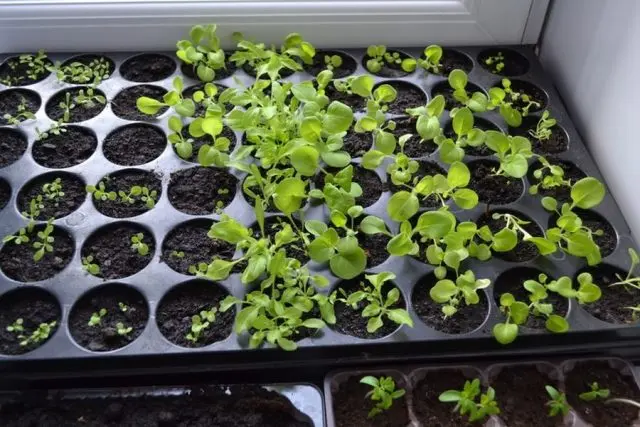
The optimum temperature for the germination of supercascade petunia seeds is 23 °C.
Care of seedlings
Caring for seedlings of a supercascade petunia is not associated with particular difficulties. Before germination, the box with seeds is only ventilated for 20 minutes a day. After the formation of sprouts, you need to remove the film and rearrange the container in a well-lit place. It is desirable to reduce the temperature in the room to 18 ° C.
When growing, the focus is on moderate watering. The soil at the roots of the annual should always remain slightly moist. In this case, waterlogging of the soil should be avoided. Seedlings, if necessary, are illuminated with fitolamps, and also provide seedlings with access to fresh air.
When 3-4 true leaves appear, the sprouts of the supercascade petunia should be dived into individual containers. A month later, the procedure is repeated so that the roots of the culture can develop freely. A week after picking, seedlings are allowed to be fed with complex minerals taken in a minimum concentration.
Planting and care in the open field
It is necessary to transplant a supercascade petunia into open ground at the end of May or at the beginning of June. It is necessary to wait for the establishment of warm weather and the end of night frosts. On the site for culture, a well-lit place with fertile soil is chosen; you must also worry about shelter from strong winds.
The grown annual can be placed directly in the ground or taken outside in spacious pots of 5-10 liters. In the first case, holes are prepared in the selected area, twice the size of the roots, and young bushes are carefully rolled into them. In one large container, it is allowed to place up to three seedlings, per 1 m2 in open ground – up to four plants.
Before planting in the garden, it is necessary to organize hardening for the culture. For this, containers with an annual plant are taken outside every day for two weeks. First, they are left in the air for only half an hour, then for a full day.
When caring for a crop on the site, you need to pay attention to several points:
- Watering. Supercascade petunia requires abundant moisture. In hot weather, water the plant at least twice a week. During the drought period, moisturizing is allowed daily. Use for irrigation you need settled lukewarm water. The procedure is carried out only in the evening hours or in the morning, before the bright sun arrives at the site.
- Top dressing. Every two weeks, it is recommended to fertilize the supercascade petunia with liquid mineral compounds. The plant needs mainly potassium, magnesium and phosphorus, nitrogen is almost not required for its development. In addition to ready-made fertilizers, it is allowed to use organic matter – for example, a solution of bird droppings or an infusion of mullein.
- Topping. In order for the supercascade petunia to bush better, from time to time its shoots need to be shortened. The first time the procedure is carried out after the formation of the fifth true sheet. At the stem, which has reached about 7 cm in length, the very top is removed. After that, the supercascade petunia begins to release side shoots more actively. It is recommended to repeat the procedure once a month.
- Loosening. When growing a crop, it is necessary to regularly stir up the soil at the roots to a shallow depth. The procedure improves the saturation of the soil with oxygen. At the same time, weeds that inhibit the development of a supercascade petunia are removed.
With the onset of late autumn, the culture is usually completely removed from the site in order to re-sow for seedlings the next year. In Our Country, supercascade petunia is grown as an annual – it is not able to survive the winter even with high-quality shelter.
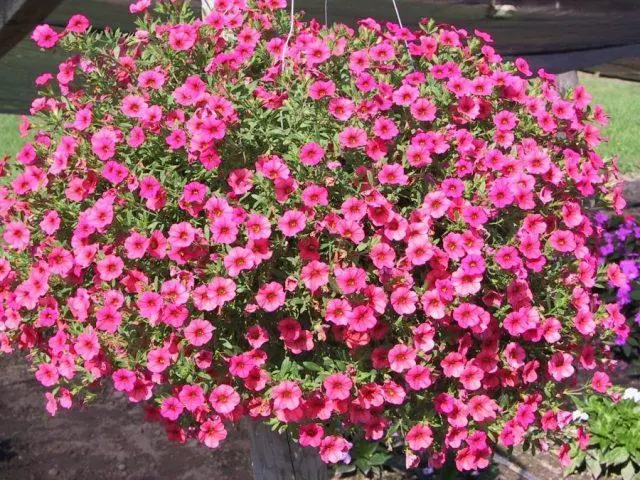
During the flowering period of an annual plant, drying buds should be removed weekly to stimulate the appearance of new ones.
Conclusion
Petunia supercascade is a hardy ornamental plant represented by a large number of varieties. The annual sprouts quickly from seed when sown for seedlings, begins to bloom early and retains attractiveness until late autumn.










